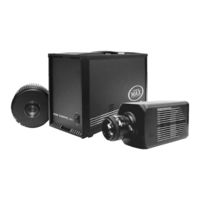Princeton Instruments MICROMAX SYSTEM Manuals
Manuals and User Guides for Princeton Instruments MICROMAX SYSTEM. We have 3 Princeton Instruments MICROMAX SYSTEM manuals available for free PDF download: User Manual
Princeton Instruments MICROMAX SYSTEM User Manual (170 pages)
Brand: Princeton Instruments
|
Category: Security Camera
|
Size: 2 MB
Table of Contents
-
-
Introduction11
-
Precautions16
-
Repairs16
-
Cleaning17
-
-
-
-
Introduction33
-
Vacuum33
-
Cooling33
-
-
-
-
Free Run48
-
-
-
-
Exposure59
-
-
Full Frame63
-
Exp63
-
Interline66
-
Binning69
-
-
Digitization72
-
-
-
Introduction75
-
Timing Modes76
-
Free Run76
-
-
-
-
Introduction99
-
Shutter99
-
-
-
-
CCD Arrays107
-
Spectral Range107
-
Types107
-
-
Cooling108
-
Mounting108
-
Shutters108
-
Inputs109
-
Outputs109
-
A/D Converter109
-
Miscellaneous110
-
-
-
-
Introduction119
-
-
-
Introduction123
-
Tips129
-
-
-
-
-
Index
151-
Troubleshooting163
-
Advertisement
Princeton Instruments MICROMAX SYSTEM User Manual (132 pages)
high-speed, low-noise CCD camera
Brand: Princeton Instruments
|
Category: Security Camera
|
Size: 3 MB
Table of Contents
-
-
Precautions14
-
Repairs14
-
Cleaning14
-
-
-
Drivers24
-
-
-
Introduction27
-
Vacuum27
-
Cooling27
-
First Light31
-
Shutter33
-
-
-
-
Free Run38
-
-
-
-
Exposure49
-
-
Full Frame53
-
Interline56
-
Binning59
-
-
Digitization62
-
-
-
Introduction65
-
Timing Modes66
-
Free Run66
-
-
-
-
Introduction89
-
-
-
CCD Arrays97
-
Types97
-
Cooling98
-
Mounting98
-
Shutters98
-
Inputs99
-
Outputs99
-
Miscellaneous100
-
-
-
-
Introduction107
-
-
-
Introduction111
-
Tips117
-
-
-
Index127
Princeton Instruments MICROMAX SYSTEM User Manual (168 pages)
Brand: Princeton Instruments
|
Category: Security System
|
Size: 2 MB
Table of Contents
-
-
-
Introduction35
-
Vacuum35
-
Cooling35
-
-
-
-
Exposure63
-
Digitization76
-
-
-
Introduction77
-
Timing Modes78
-
-
-
Introduction101
-
-
-
CCD Arrays115
-
Cooling116
-
Mounting116
-
Shutters117
-
Inputs117
-
Outputs117
-
A/D Converter118
-
Miscellaneous118
-
-
-
Introduction127
-
-
-
Introduction139
-
Requirements139
-
-
-
-
Limited Warranty159
-
-
Index
163
Advertisement

